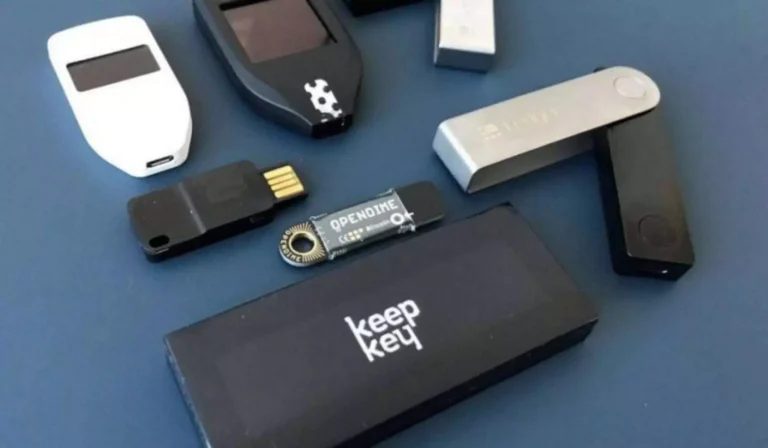Another use of liquidity swimming pools entails what’s often recognized as yield farming, which we’ll explain in additional detail shortly. How a lot the price strikes depends on the size of the commerce, in proportion to the dimensions of the pool. The larger the pool is compared to a commerce, the lesser the value impression a.k.a slippage occurs, so massive pools can accommodate bigger trades without moving the price too much. In its primary form, a single liquidity pool holds 2 tokens and each pool creates a model new market for that exact pair of tokens. For trades to happen, both consumers and sellers should converge on the price. This can happen by either a buyer bidding larger or a vendor reducing their price.
These funds are crypto property deposited by customers, which are then lent out to people and protocols. They kind the idea for lots of DEXs to function since liquidity is essential to having a easy and seamless buying and selling experience. Liquidity pools are one of the foundational applied sciences behind the present DeFi ecosystem. They are a vital a half of automated market makers (AMM), borrow-lend protocols, yield farming, synthetic assets, on-chain insurance coverage, blockchain gaming – the list goes on.

Simply put, the order guide is a set of the at present open orders for a given market. A liquidity pool is basically funds thrown collectively in an enormous digital pile. But what are you capable to do with this pile in a permissionless setting, the place anybody can add liquidity to it? MoonPay additionally makes it easy to sell crypto whenever you decide it’s time to money out, including several tokens mentioned on this article like ETH and USDC.
Liquidity providers may experience losses if the worth of the belongings they contributed to the pool fluctuates significantly. This is exactly why there was a have to invent something new that can work well within https://www.xcritical.in/ the decentralized world and that is the place liquidity swimming pools come to play. Some of the 2nd layer scaling initiatives like Loopring look promising, but even they’re nonetheless dependant on market makers and so they can face liquidity points.
The Position Of Crypto Liquidity Swimming Pools In Defi
The first user is ready to purchase the asset before the second consumer, after which sell it back to them at the next value. This permits the primary person to earn a revenue at the expense of the second consumer. You are now leaving the SoFi web site and coming into a third-party web site. SoFi has no control over the content, products or services provided nor the safety or privacy of information transmitted to others via their website. We suggest that you evaluation the privacy coverage of the positioning you’re getting into. SoFi doesn’t guarantee or endorse the merchandise, information or recommendations offered in any third celebration web site.
These assets could presumably be any pair of tokens, including stablecoins, that are cryptocurrencies designed to reduce worth volatility. Liquidity tokens, also referred to as LP tokens, are an important a half of the mechanism of liquidity swimming pools. These tokens are given to liquidity providers as proof of their contribution when they deposit their property into the liquidity pool. Essentially, these tokens are a claim on the belongings deposited into the pool. A liquidity pool represents cryptocurrency locked in a sensible contract on a DEX (decentralized exchange). In liquidity pools, there is not any counterparty who has to match your order, your tokens come straight from the offered funds.
Our platform is devoted to offering you with up-to-date instructional assets, expert opinions, and a wealth of data to guide you in understanding the complex panorama of finance. However, we encourage you to consult with a professional financial advisor before making any investment selections based on the academic info you find here. The info discovered on this web site does not constitute financial recommendation. Impermanent loss is when the worth of an asset lowers or raises crazily. And rug pulls are when the pool doesn’t truly give any of the funds again. If the pool is small, there will be a excessive value influence —you will have an result on the price a lot—and in some circumstances you possibly can double or triple the worth of an asset very simply.

These good contracts energy nearly each part of DeFi, and they’ll most probably continue to take action. Another rising DeFi sector is insurance coverage against good contract danger. You could consider an order book trade as peer-to-peer, the place patrons and sellers are connected by the order guide.
The exact amount earned by any liquidity provider will rely upon the size of the pool, the buying and selling activity, and the charges which are charged. The quantity a liquidity provider can earn from offering liquidity to a pool can range primarily based on a quantity of different factors. The LPTs may be redeemed for the underlying property at any time, and the good contract will routinely issue the appropriate what is liquidity mining number of underlying tokens to the person. Without liquidity, AMMs wouldn’t have the ability to match patrons and sellers of belongings on a DEX, and the entire system would grind to a halt. Yield farming is a practice involving using a quantity of liquidity providers in a method that may maximize yield. Staking crypto works a lot the same method as participating in a pool, although the process could additionally be totally different.
Are Liquidity Pools Profitable?
Simply put, yield farming is the process of providing liquidity to a pool in order to earn a portion of the charges which may be generated from trading exercise. Liquidity swimming pools are created when users (called liquidity providers) deposit their digital belongings into a smart contract. As customers trade or borrow from the liquidity pool, the pool’s asset composition could change.
Rather than traditional order books containing buy and promote orders, most DEXs use automated market makers (AMMs) to facilitate trades routinely via liquidity pools. A liquidity pool is a collection of funds locked in a wise contract that provides liquidity to facilitate buying and selling on decentralized exchanges. It allows users to trade property without the necessity for a standard buyer and seller match, by pooling their assets together and incomes charges based on the buying and selling activity within the pool.
To create a greater trading expertise, numerous protocols supply even more incentives for users to provide liquidity by providing extra tokens for specific “incentivized” swimming pools. Participating in these incentivized liquidity pools as a provider to get the maximum quantity of LP tokens is called liquidity mining. Liquidity mining is how crypto change liquidity providers can optimize their LP token earnings on a specific market or platform. Liquidity swimming pools are the backbone of many decentralized exchanges (DEX), similar to Uniswap.
- The major benefit of crypto liquidity pools is the potential to earn a yield on crypto that might in any other case be idle.
- The cryptocurrency change powers the Web3 financial system, facilitating the transfer of digital currency.
- There’s no need for order books containing countless buy and promote orders.
- These can probably be exploited by malicious actors, leading to financial losses for liquidity providers.
- If you don’t know what liquidity swimming pools are, you should be excited to learn about them.
Depositing your funds in a liquidity pool allows you to earn returns starting from 10-25% each year, which is very worthwhile and fewer unstable than immediately buying and selling crypto assets. The most typical use case for liquidity pools is in DEXs, as mentioned above. The automated market maker system extensively utilises liquidity from the swimming pools to fulfil orders. However, there are numerous different issues that liquidity swimming pools have been used to resolve.
Liquidity Pool Use Case
Even so, since much of the assets within the crypto area are on Ethereum, you can’t commerce them on different networks until you employ some type of cross-chain bridge. Before we go any additional, it’s price noting that there are DEXes that work simply nice with on-chain order books. Binance DEX is built on BNB Chain, and it’s particularly designed for quick and low-cost buying and selling.

Because of the big revenue alternative, these protocols have turn into a main target for hackers. Cryptopedia doesn’t guarantee the reliability of the Site content material and shall not be held answerable for any errors, omissions, or inaccuracies. The opinions and views expressed in any Cryptopedia article are solely these of the author(s) and don’t mirror the opinions of Gemini or its administration.
Future Outlook For Liquidity Swimming Pools And Defi
In essence, market makers are entities that facilitate trading by always willing to buy or promote a selected asset. By doing that they supply liquidity, so the users can all the time trade and so they don’t have to wait for an additional counterparty to indicate up. Yes, anyone can turn out to be a liquidity provider by depositing crypto assets into a liquidity pool.
How Do Liquidity Swimming Pools Work? Defi Explained
If you look on this graph (the left one) you’ll have the ability to see how many consumers and sellers there are at different costs. Slippage refers to the difference between the worth you choose to commerce an asset for and the ultimate value at which it executes. Slippage may be very excessive on assets with low liquidity since crypto is a unstable asset class. The value can change between when you initiate the trade and when it’s finalized.
What’s A Liquidity Pool In Cryptocurrency?
If you’ve made it this far with out reading our AMM article, congrats, but if you’re confused… go learn that article and this one will make nearly good sense. Anyways, as you purchase increasingly more BAT from the pool, by giving it ETH, it will slowly increase the price that you’re paying for each BAT. ZkSharding is a re-introduced concept of Ethereum’s sharded execution layer which scales blockchains with p… This signifies that on a blockchain like Ethereum, an on-chain order book trade is virtually inconceivable. You might use sidechains or layer-two options, and these are on the greatest way.

